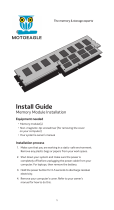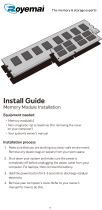
Table of contents
1 Product features ........................................................................................................................................... 1
Front panel components ........................................................................................................................................ 1
Rear panel components ......................................................................................................................................... 3
Serial number location .......................................................................................................................................... 4
2 Hardware changes ......................................................................................................................................... 5
Warnings and cautions .......................................................................................................................................... 5
Removing and replacing the access panel ............................................................................................................ 5
Removing the access panel ................................................................................................................. 5
Replacing the access panel ................................................................................................................. 7
Locating internal components ............................................................................................................................... 8
Removing and replacing the M.2 ash storage module ........................................................................................ 9
Removing and replacing the battery ................................................................................................................... 11
Replacing a low-prole PCI-Express card ........................................................................................................... 13
Replacing a WLAN module ................................................................................................................................... 15
Installing an internal USB ash drive .................................................................................................................. 17
Installing additional SDRAM system memory ..................................................................................................... 18
SODIMMs ............................................................................................................................................ 18
DDR3L-SDRAM SODIMMs ................................................................................................................... 18
Populating SODIMM sockets ............................................................................................................. 18
Installing SODIMMs ............................................................................................................................ 19
Appendix A Computer Setup (F10) Utility, BIOS Settings .................................................................................... 22
Computer Setup (F10) Utilities ............................................................................................................................ 22
Using Computer Setup (F10) Utilities ................................................................................................ 22
Computer Setup—File ....................................................................................................................... 24
Computer Setup—Storage ................................................................................................................ 25
Computer Setup—Security ............................................................................................................... 26
Computer Setup—Power .................................................................................................................. 28
Computer Setup—Advanced ............................................................................................................. 28
Changing BIOS Settings from the HP BIOS Congure Utility (HPBCU) ................................................................ 30
Updating or restoring a BIOS ............................................................................................................................... 32
Appendix B Diagnostics and troubleshooting .................................................................................................... 34
LEDs ..................................................................................................................................................................... 34
Wake-on LAN ....................................................................................................................................................... 35
v






















